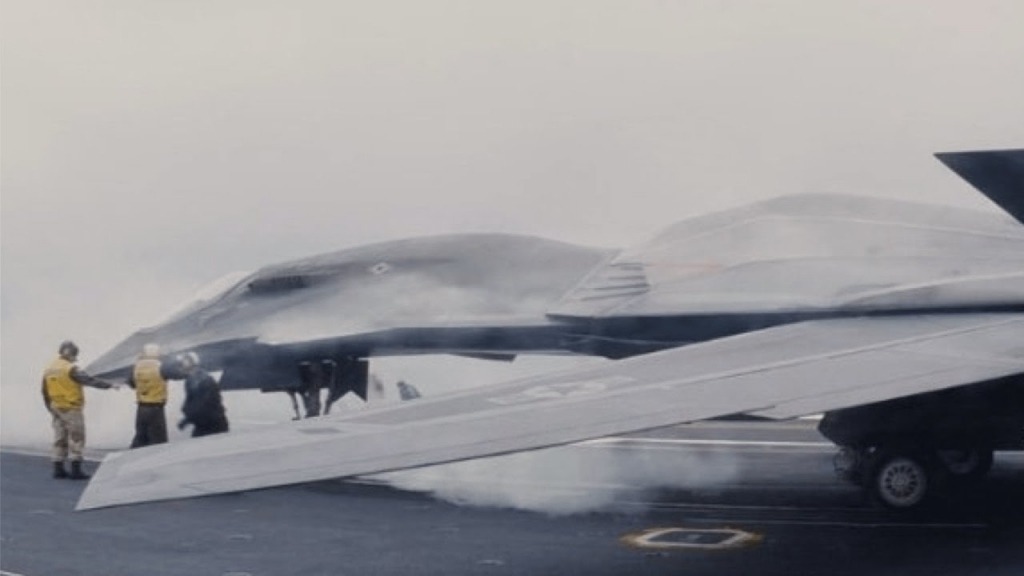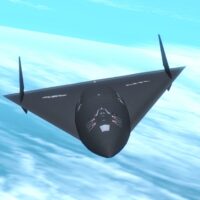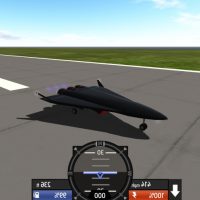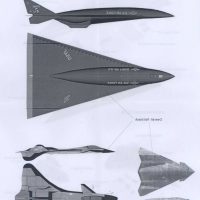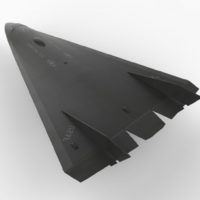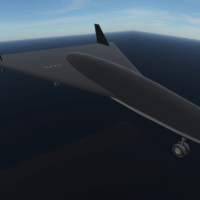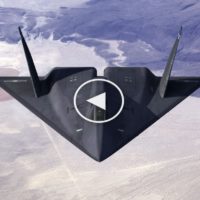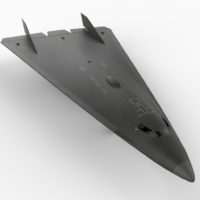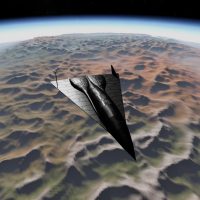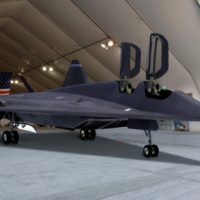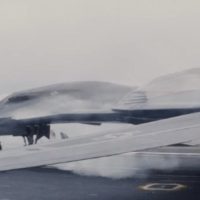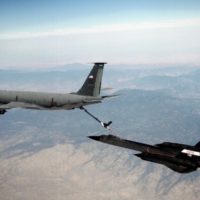Aurora Aircraft (SR-91) Mph, Cost, Pics, Wiki, Specs, and Crash. Aurora also known as SR-91 Aurora is the popular name for a hypothesized American reconnaissance aircraft, believed by some to be capable of hypersonic flight at speeds of Mach 5+. According to the hypothesis, Aurora was developed in the 1980s or 1990s as a replacement for the aging and expensive SR-71 Blackbird.
A British Ministry of Defence report released in May 2006 refers to USAF priority plans to produce a Mach 4-6 highly supersonic vehicle, but no conclusive evidence had emerged to confirm the existence of such a project. It was believed by some that the Aurora project was canceled due to a shift from spy-planes to high-tech unmanned aerial vehicles and reconnaissance satellites which can do the same job as a spyplane, but with less risk of casualties.
Does the US Air Force or America’s intelligence agencies have a secret hypersonic aircraft capable of a Mach 6 performance?
The continually growing evidence suggests that the answer to this question is YES. Perhaps the most well-known instance which provides evidence of such an aircraft’s existence is the sighting of a triangular plane over the North Sea in August 1989 by oil-exploration engineer Chris Gibson. As the famous “skyquakes” heard over Los Angeles since the early 1990s, found to be heading for the secret Groom Lake (Area 51) installation in the Nevada desert, numerous other facts provide an understanding of how the aircraft’s technology works. Rumored to exist but routinely denied by U.S. officials, the name of this aircraft is Aurora.
The outside world uses the name Aurora because a censor’s slip let it appear below the SR-71 Blackbird and U-2 in the 1985 Pentagon budget request. Even if this was the actual name of the project, it would have by now been changed after being compromised in such a manner.
The plane’s real name has been kept a secret along with its existence. This is not unfamiliar though, the F-117a stealth fighter was kept a secret for over ten years after its first pre-production test flight. The project is what is technically known as a Special Access Program (SAP). More often, such projects are referred to as “black programs.”
What was the first sign of the existence of SR-91 Aurora?
On 6 March 1990, one of the United States Air Force’s Lockheed SR-71 Blackbird spyplanes shattered the official air speed record from Los Angeles to Washington’s Dulles Airport. There, a brief ceremony marked the end of the SR-71’s operational career. Officially, the SR-71 was being retired to save the $200-$ 300 million a year it cost to operate the fleet. Some reporters were told the plane had been made redundant by sophisticated spy satellites.
But there was one problem, the USAF made no opposition towards the plane’s retirement, and congressional attempts to revive the program were discouraged. Never in the history of the USAF had a program been closed without opposition. Aurora is the missing factor to the silent closure of the SR-71 program.
Testing such a new radical aircraft brings immense costs and inconvenience, not just in the design and development of a prototype aircraft, but also in providing a secret testing place for an aircraft that is obviously different from those the public are aware of.
Read: Boeing 737-800 Seat map, Seating Chart, Passenger
The Groom Dry Lake, in the Nevada desert, is home to one of America’s elite secret proving grounds which was Aurora’s most likely test location. Comparing today’s Groom Lake with images of the base in the 1970s, it is apparent that many of the larger buildings and hangars were added during the following decade. The Groom Lake test facility has a lake-bed runway that is six miles long, twice as long as the longest normal runways in the United States. The reason for such a long runway is simple, the length of a runway is determined either by the distance an aircraft requires to accelerate to a flying speed, or the distance that the aircraft needs to decelerate after landing. That distance is proportional to the speed at which lift-off takes place. Usually, very long runways are designed for aircraft with very high minimum flying speeds, and, as is the case at Edwards AFB, these are aircraft that are optimized for very high maximum speeds. Almost 19,000 feet of the runway at Groom Lake is paved for normal operations.
Lockheed’s Skunk Works, now the Lockheed Advanced Development Company, is the most likely prime contractor for the SR-91 Aurora aircraft. Throughout the 1980s, financial analysts concluded that Lockheed had been engaged in several large classified projects. They weren’t able to identify enough of them to account for the company’s income.
Technically, the Skunk Works has a unique record of managing large, high-risk programs under an incredible unparalleled secrecy. Even with high-risk projects that the company has undertaken, Lockheed has a record of providing what it promises to deliver.
In 2006, renowned aviation writer Bill Sweetman had stated and derived to a conclusion that, “This evidence of 20 years of examining budget “holes”, unexplained sonic booms, plus the Gibson sighting, helps establish the program’s initial existence. My investigations continue to turn up evidence that suggests current activity. Having spent years sifting through military budgets, tracking untraceable dollars and code names, I learned how to sort out where money was going. This year, when I looked at the Air Force operations budget in detail, I found a $9-billion black hole that seems a perfect fit for a project like Aurora.”
Does the US Air Force have a secret SR-91 Aurora hypersonic aircraft capable of a Mach 6 performance?
In the light of continually growing evidence suggests that the answer to this question is YES.
The well-known instance which provides evidence of such an aircraft’s existence is the sighting of a triangular plane over the North Sea in August 1989 by oil-exploration engineer Chris Gibson.
In another incident of the famous “sky quakes” heard over Los Angeles since the early 1990s, found to be heading for the secret Groom Lake (Area 51) installation in the Nevada desert, numerous other facts provide an understanding of how the aircraft’s technology works. Rumored to exist but routinely denied by U.S. officials, the name of this aircraft is Aurora.
The outside world uses the name Aurora because a censor’s slip let it appear below the SR-71 Blackbird and U-2 in the 1985 Pentagon budget request. Even if this was the actual name of the project, it would have by now been changed after being compromised in such a manner.
The plane’s real name has been kept a secret along with its existence. This is not unfamiliar though, the F-117a stealth fighter was kept a secret for over ten years after its first pre-production test flight.
The project is what is technically known as a Special Access Program (SAP). More often, such projects are referred to as “black programs.”
what was the first sign of the existence of SR-91 Aurora in United States?
On 6 March 1990, one of the United States Air Force’s Lockheed SR-71 Blackbird spyplanes shattered the official air speed record from Los Angeles to Washington’s Dulles Airport.
There, a brief ceremony marked the end of the SR-71’s operational career. Officially, the SR-71 was being retired to save the $200-$300 million a year it cost to operate the fleet. Some reporters were told the plane had been made redundant by sophisticated spy satellites.
A British Ministry of Defence report released in May 2006 refers to USAF priority plans to produce a Mach 4-6 highly supersonic vehicle, but no conclusive evidence had emerged to confirm the existence of such a project.
It was believed by some that the Aurora project was canceled due to a shift from spy-planes to high-tech unmanned aerial vehicles and reconnaissance satellites which can do the same job as a spy plane, but with less risk of casualties.

